The 20 Best Indie Rock Albums of 1995
Featuring Guided By Voices, Fugazi, Superchunk and more

Okay, sure, let’s get nostalgic. 1995 was a pivotal year for American underground rock ‘n’ roll. The early ‘90s heyday of almost any indie rock band with a CMJ hit getting a major record deal in the wake of Nirvana’s success had ended, and the marketing concept known as “alternative” had become as thoroughly homogenized and corporatized as hair metal, only with almost none of the dumb glam fun of those Sunset Strip bands. After a brief period where the distinction between major labels and indie labels blurred, the value and significance of independent music became clear again. Indie labels gave both musicians and fans a legitimate alternative to the bland, cookie-cutter rock music that had taken over MTV programming and alternative radio station playlists by the start of 1995. That freedom resulted in an unusually fruitful year in 1995, with some of the best bands of the era releasing some of their best music.
Since it’s a nebulous term, let’s start off with some parameters. When we talk about “indie rock,” we’re talking about the loosely organized scene of independent bands and labels that started to take form near the end of the ‘70s and grew into a viable alternative music industry throughout the 1980s. It was less a musical genre than a philosophy, the idea of making and producing your own art, and driving through America to share it with fellow thinkers. The music itself could be almost anything, but generally there was some influence from the underground rock and punk lineage that stretched from the ‘70s punk heyday back through arty proto-punk oddballs and the noisier, edgier ‘60s bands that never made it into the classic rock canon—bands like the Stooges, MC5 and the Velvet Underground, who were basically the wellspring of the whole thing. Those specific influences were by no means universal, but if you talked about “indie rock” in the ‘90s, you were generally on that wavelength.
By 1990, the major labels had already signed most of the biggest bands from the ‘80s—Sonic Youth, Dinosaur Jr., Husker Du—but hadn’t really profited from it. And then Nirvana blew up in 1991, going from a band you could see in a room that fit 200 people, to one whose name would be worn on T-shirts for decades to come by the same kids who idolize massive rock stars like Led Zeppelin and The Who. For a brief window, the kind of music that had been confined to college radio stations was now popping up on TV and on pop radio stations, and bands that could never even set foot in a major label’s headquarters a year earlier were now getting contracts. It was basically a blip that was all over before the end of 1994, but the majors scooping up the most traditional and mainstream-ready indie rock bands drove independent labels to find even more adventurous music to promote.
Indie rock’s big 1995 peaked with what some called the “indie rock Lollapalooza”—that year’s edition of the traveling megashow was headlined by Sonic Youth, featured Pavement and Beck on the main stage, and saw side stage performances from Yo La Tengo, Brainiac, Helium, Built to Spill, Superchunk, Versus and Blonde Redhead, among others. Of course, that was also the year the original version of Lollapalooza started to fade in the public’s eye, with the vast majority of press attention going to Courtney Love’s antics over any of the show’s actual music. If you only knew about Lollapalooza because of the media coverage, you’d think Hole headlined, not Sonic Youth. That tour was a triumph for the indie rock scene but also a farewell to whatever potential mainstream relevance it might’ve had at the time. I totally would’ve been at the Atlanta date if my manager at TCBY Treats wasn’t such a dick.
Indie rock would eventually go legit just a few years later, in the ‘00s, but only after younger bands stripped it of the noise and experimentation that helped define the thing in the ‘80s and ‘90s. “Indie”—a genre tag that initially encompassed a diverse range of sounds and styles, and that referred more to the artistic spirit behind the work and the means of production that got it into stores than any musical similarities—became as repetitive and soulless as the “alternative rock” that major labels pushed in the ‘90s.
So yeah, 1995 was kind of a crucial year for this type of music, and since every record on this list turned 25 this year, it’s as good a time as any to look back on the year’s best. I’m limiting it to albums that were actually released by independent labels (with one exception…), so Sonic Youth’s Washing Machine is off the table. Labels that had distribution deals or other partnerships with majors were considered, though, as long as they weren’t outright owned by them. If you haven’t heard any of these records, go seek ‘em out, if you like the good stuff.
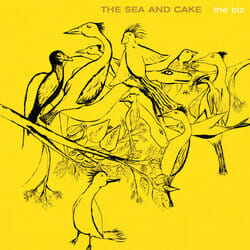 20. The Sea and Cake: The BizThe second album released by The Sea and Cake in 1995, The Biz, finds the band in perfect control of its hushed, jazzy approach to instrumentally intricate pop songs. It’s easy listening that’s still a little challenging, with complex rhythms, melodies that take their time and aren’t cloying and a general hipster boho vibe that some college radio indie rock types that I personally knew at the time and who were steeped in the genre’s punk and noise traditions absolutely could not get into. The Biz is texturally similar to Tortoise, with whom the band shares a member (John McEntire) and an ethos, to the point where you could maybe say The Sea and Cake is like if Tortoise wrote jazzy ‘70s AM radio songs instead of their less formalized soundscapes. “Sending” is one of my ultimate late night wind down songs.
20. The Sea and Cake: The BizThe second album released by The Sea and Cake in 1995, The Biz, finds the band in perfect control of its hushed, jazzy approach to instrumentally intricate pop songs. It’s easy listening that’s still a little challenging, with complex rhythms, melodies that take their time and aren’t cloying and a general hipster boho vibe that some college radio indie rock types that I personally knew at the time and who were steeped in the genre’s punk and noise traditions absolutely could not get into. The Biz is texturally similar to Tortoise, with whom the band shares a member (John McEntire) and an ethos, to the point where you could maybe say The Sea and Cake is like if Tortoise wrote jazzy ‘70s AM radio songs instead of their less formalized soundscapes. “Sending” is one of my ultimate late night wind down songs.
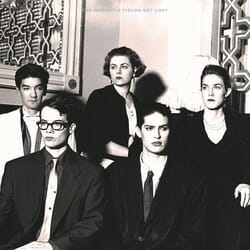 19. The Magnetic Fields: Get LostStephin Merritt followed up a triumphant 1994, in which his band the Magnetic Fields released two of its best albums, with an equally big 1995. First up, his supergroup The 6ths released the major label album Wasps’ Nest, where 16 songs written and performed by Merritt were sung by various other indie rock figures, including Mac McCaughan, Georgia Hubley, Mary Timony and Chris Knox. (If this list was a top 25, and if Wasps’ Nest wasn’t released on a label owned by PolyGram and now Universal, it’d probably be on here.) Then eight months later, Merritt released Get Lost, which built on the two Magnetic Fields albums from ‘94 and revealed him to be an even sharper and smarter songwriter than previously thought. Highlights include the icy synths of “Smoke and Mirrors,” the downcast tenderness of “With Whom to Dance,” the jubilant dance-pop of “You and Me and the Moon” and the lush hum of college radio hit “All the Umbrellas in London.”
19. The Magnetic Fields: Get LostStephin Merritt followed up a triumphant 1994, in which his band the Magnetic Fields released two of its best albums, with an equally big 1995. First up, his supergroup The 6ths released the major label album Wasps’ Nest, where 16 songs written and performed by Merritt were sung by various other indie rock figures, including Mac McCaughan, Georgia Hubley, Mary Timony and Chris Knox. (If this list was a top 25, and if Wasps’ Nest wasn’t released on a label owned by PolyGram and now Universal, it’d probably be on here.) Then eight months later, Merritt released Get Lost, which built on the two Magnetic Fields albums from ‘94 and revealed him to be an even sharper and smarter songwriter than previously thought. Highlights include the icy synths of “Smoke and Mirrors,” the downcast tenderness of “With Whom to Dance,” the jubilant dance-pop of “You and Me and the Moon” and the lush hum of college radio hit “All the Umbrellas in London.”
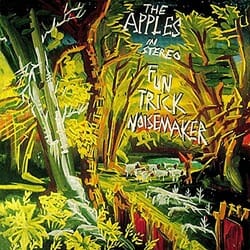 18. The Apples in Stereo: Fun Trick NoisemakerThe Apples in Stereo were the first Elephant 6 band to establish itself on a national level, getting a fair bit of positive press and some significant touring slots on the back of Fun Trick Noisemaker. Of the three main E6 bands—the Apples, the Olivia Tremor Control and Neutral Milk Hotel—the Apples were always the most straightforward and pop-focused, and their first LP shows what a great songwriter Robert Schneider had become. It’s a little more raw than the albums that came after, but it was a noticeable step up in production value from their earlier singles, some of which reappear here in new versions.
18. The Apples in Stereo: Fun Trick NoisemakerThe Apples in Stereo were the first Elephant 6 band to establish itself on a national level, getting a fair bit of positive press and some significant touring slots on the back of Fun Trick Noisemaker. Of the three main E6 bands—the Apples, the Olivia Tremor Control and Neutral Milk Hotel—the Apples were always the most straightforward and pop-focused, and their first LP shows what a great songwriter Robert Schneider had become. It’s a little more raw than the albums that came after, but it was a noticeable step up in production value from their earlier singles, some of which reappear here in new versions.
 17. The Yips: Bonfire in a Dixie CupGilmore Tamny writes great, hook-filled, unpretentious rock songs that are better art than almost every record ever referred to as art rock. Bonfire in a Dixie Cup was the first of three albums her band the Yips released in the ‘90s; with scuzzy, raucous riffs and the sharp, stabbing treble of Jon Davidson’s cymbals, it’s a good example of the kind of gritty lo-fi greatness the crucial Siltbreeze label is famous for, falling on the more accessible end of its catalogue. Tamny’s unique voice and perspective are as vital now as they were 25 years ago.
17. The Yips: Bonfire in a Dixie CupGilmore Tamny writes great, hook-filled, unpretentious rock songs that are better art than almost every record ever referred to as art rock. Bonfire in a Dixie Cup was the first of three albums her band the Yips released in the ‘90s; with scuzzy, raucous riffs and the sharp, stabbing treble of Jon Davidson’s cymbals, it’s a good example of the kind of gritty lo-fi greatness the crucial Siltbreeze label is famous for, falling on the more accessible end of its catalogue. Tamny’s unique voice and perspective are as vital now as they were 25 years ago.
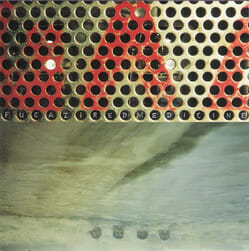 16. Fugazi: Red MedicineConfession: I have never been a huge Fugazi fan. I respect their work and understand how utterly vital they and their music are, but they’ve never really been a band I sit down and listen to. I saw ‘em once, and they were good. I get why people absolutely love them, why they’d be somebody’s favorite band, but I don’t feel it myself. Still, this list would be massively incomplete without mentioning Red Medicine. Fugazi’s fourth album has everything that made them so popular—it’s taut, pissed off, self-righteous but not entirely humorless, and infuses the spirit of punk and hardcore into a batch of songs that takes some of the structural orthodoxy of rock into weird and interesting directions. It’s also their most experimental record up until that point, exploring textures and songwriting avenues that were new for the band.
16. Fugazi: Red MedicineConfession: I have never been a huge Fugazi fan. I respect their work and understand how utterly vital they and their music are, but they’ve never really been a band I sit down and listen to. I saw ‘em once, and they were good. I get why people absolutely love them, why they’d be somebody’s favorite band, but I don’t feel it myself. Still, this list would be massively incomplete without mentioning Red Medicine. Fugazi’s fourth album has everything that made them so popular—it’s taut, pissed off, self-righteous but not entirely humorless, and infuses the spirit of punk and hardcore into a batch of songs that takes some of the structural orthodoxy of rock into weird and interesting directions. It’s also their most experimental record up until that point, exploring textures and songwriting avenues that were new for the band.
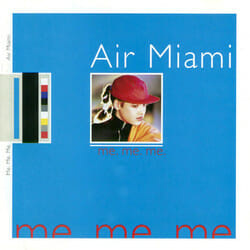 15. Air Miami: Me Me MeIt felt like Unrest were on the verge of breaking out when they broke up after 1993’s Perfect Teeth. Frontman Mark Robinson and bassist Bridget Cross immediately continued on under the name Air Miami, and in 1995 released that band’s only album, Me Me Me. It’s not a huge departure from Unrest—Robinson was still the fastest guitar strummer around at the time, and his nervy pop songs continued to juggle skittish anxiety with an almost placid stillness—and perhaps if it had been released under that name it would’ve made a bigger impact. Still, it’s a gorgeous record from a couple of great pop musicians who still haven’t quite gotten their due.
15. Air Miami: Me Me MeIt felt like Unrest were on the verge of breaking out when they broke up after 1993’s Perfect Teeth. Frontman Mark Robinson and bassist Bridget Cross immediately continued on under the name Air Miami, and in 1995 released that band’s only album, Me Me Me. It’s not a huge departure from Unrest—Robinson was still the fastest guitar strummer around at the time, and his nervy pop songs continued to juggle skittish anxiety with an almost placid stillness—and perhaps if it had been released under that name it would’ve made a bigger impact. Still, it’s a gorgeous record from a couple of great pop musicians who still haven’t quite gotten their due.
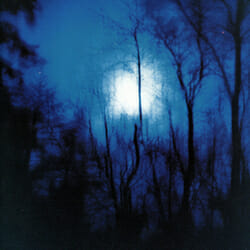 14. Flying Saucer Attack: FurtherThis is a big tent. You might want to write this stuff off as a bunch of Sonic Youth or Pavement knockoffs, but since “indie rock” was less of a musical genre than a market segment, there was a lot of variety in what fell under the tag back then. Take Flying Saucer Attack: you can toss a half-dozen different labels that are more descriptive at ‘em—space rock, noise, drone, Wikipedia even files them under shoegaze—but given the labels they were on, the zines and stations that promoted them, the bands they played with and the audience that they cultivated, they fit as snugly within the “indie rock” umbrella as any of the contemporary big guns. Further is a great place to start with them if you aren’t familiar—it’s a beautifully blurred collection of spectral folk songs buried under tranquil noise, like a campfire singalong softly screeching out to the edges of the cosmos.
14. Flying Saucer Attack: FurtherThis is a big tent. You might want to write this stuff off as a bunch of Sonic Youth or Pavement knockoffs, but since “indie rock” was less of a musical genre than a market segment, there was a lot of variety in what fell under the tag back then. Take Flying Saucer Attack: you can toss a half-dozen different labels that are more descriptive at ‘em—space rock, noise, drone, Wikipedia even files them under shoegaze—but given the labels they were on, the zines and stations that promoted them, the bands they played with and the audience that they cultivated, they fit as snugly within the “indie rock” umbrella as any of the contemporary big guns. Further is a great place to start with them if you aren’t familiar—it’s a beautifully blurred collection of spectral folk songs buried under tranquil noise, like a campfire singalong softly screeching out to the edges of the cosmos.
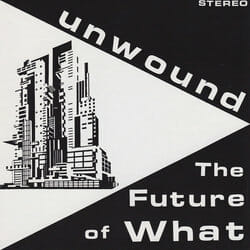 13. Unwound: The Future of WhatThe scenes used to beef. The punks, indie rockers and emo kids didn’t always get along. Unwound was one of the few bands that could unify them. The Future of What isn’t as powerful as 1994’s New Plastic Ideas or as expansive as 1996’s Repetition, but it’s about as succinct a distillation of what made Unwound special—beautiful and ugly, muscular yet oddly tender, they were a punk band in love with noise and hooks and pushing themselves and their sound.
13. Unwound: The Future of WhatThe scenes used to beef. The punks, indie rockers and emo kids didn’t always get along. Unwound was one of the few bands that could unify them. The Future of What isn’t as powerful as 1994’s New Plastic Ideas or as expansive as 1996’s Repetition, but it’s about as succinct a distillation of what made Unwound special—beautiful and ugly, muscular yet oddly tender, they were a punk band in love with noise and hooks and pushing themselves and their sound.
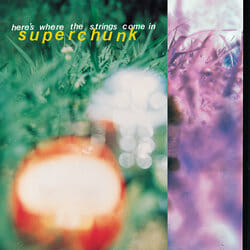 12. Superchunk: Here’s Where the Strings Come In“Hyper Enough” and “Detroit Has a Skyline” is about as strong a two-song combo as any album has ever seen, but after those clear standouts, Strings settles down into a fairly by-the-book Superchunk record. It’s the end of the classic string of albums that began their career, before their less steady, increasingly exhausted-sounding work of the late ‘90s, but the signs of that exhaustion were already creeping in on the margins, with longer-than-usual songs that regularly approach or even pass the four-minute mark. Those two songs are still amazing, though, and some of the others on here—especially “Iron On” and “Animated Airplanes Over Germany”—embody what’s basically been Superchunk’s signature sound over the past two decades, but with slower tempos, brighter guitar tones, slicker production and a consistent embrace of the more openly emotional and introspective lyrical approach they first pursued on 1994’s Foolish.
12. Superchunk: Here’s Where the Strings Come In“Hyper Enough” and “Detroit Has a Skyline” is about as strong a two-song combo as any album has ever seen, but after those clear standouts, Strings settles down into a fairly by-the-book Superchunk record. It’s the end of the classic string of albums that began their career, before their less steady, increasingly exhausted-sounding work of the late ‘90s, but the signs of that exhaustion were already creeping in on the margins, with longer-than-usual songs that regularly approach or even pass the four-minute mark. Those two songs are still amazing, though, and some of the others on here—especially “Iron On” and “Animated Airplanes Over Germany”—embody what’s basically been Superchunk’s signature sound over the past two decades, but with slower tempos, brighter guitar tones, slicker production and a consistent embrace of the more openly emotional and introspective lyrical approach they first pursued on 1994’s Foolish.
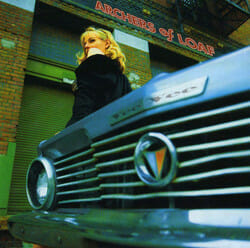 11. Archers of Loaf: Vee VeeI love Archers of Loaf. They’re probably the most important band to me personally—the one that really got me hooked on this kind of music, the one that inspired me to start playing music, and the one that I saw live in the ‘90s more than any other band (outside of certain local bands in Athens, Ga., near the end of the decade). And although I love all four of their albums, none of them are great from start to finish, and that includes Vee Vee, which is probably their most acclaimed full-length. It has some great songs on it—the first side is basically unassailable, one hit after another—and the guitar interplay between Eric Bachmann and Eric Johnson was in the middle of a sustained peak that ran from 1994’s Vs. the Greatest of All Time EP through 1996’s excellent All the Nation’s Airports. “Harnessed in Slums” is on the shortlist of the best indie rock anthems of all time, for crying out loud. But Vee Vee loses a bit of momentum in its second half, with a run of some of the band’s least memorable songs. It’s still great enough to make it all the way to number 11, but yeah, there are 10 indie rock albums from ‘95 better than this one.
11. Archers of Loaf: Vee VeeI love Archers of Loaf. They’re probably the most important band to me personally—the one that really got me hooked on this kind of music, the one that inspired me to start playing music, and the one that I saw live in the ‘90s more than any other band (outside of certain local bands in Athens, Ga., near the end of the decade). And although I love all four of their albums, none of them are great from start to finish, and that includes Vee Vee, which is probably their most acclaimed full-length. It has some great songs on it—the first side is basically unassailable, one hit after another—and the guitar interplay between Eric Bachmann and Eric Johnson was in the middle of a sustained peak that ran from 1994’s Vs. the Greatest of All Time EP through 1996’s excellent All the Nation’s Airports. “Harnessed in Slums” is on the shortlist of the best indie rock anthems of all time, for crying out loud. But Vee Vee loses a bit of momentum in its second half, with a run of some of the band’s least memorable songs. It’s still great enough to make it all the way to number 11, but yeah, there are 10 indie rock albums from ‘95 better than this one.
 10. Boyracer: We Are Made of the Same WoodI might be fudging a bit here. We Are Made of the Same Wood is technically classified as an EP—it fits on a 10-inch—but it easily could’ve been a full-length. It’s got 12 songs, it’s over 20 minutes—c’mon, that’s good enough for me. And it’s almost perfect as it is, so it deserves a spot on this list. For my money, this is the best single document of Boyracer’s noise-drenched indie-pop, and an example of lo-fi as good as Guided by Voices. Boyracer took the hyperkinetic guitars and pop hooks of the Wedding Present, coated them with dirt and grime, and then spat them out in short, rapid-fire bursts, with only the occasional dub or proto-chiptune interlude. If you need convincing, pull We Are Made of the Same Wood up on your app of choice and listen to “Vitamin B” or “Your Dark Secrets.”
10. Boyracer: We Are Made of the Same WoodI might be fudging a bit here. We Are Made of the Same Wood is technically classified as an EP—it fits on a 10-inch—but it easily could’ve been a full-length. It’s got 12 songs, it’s over 20 minutes—c’mon, that’s good enough for me. And it’s almost perfect as it is, so it deserves a spot on this list. For my money, this is the best single document of Boyracer’s noise-drenched indie-pop, and an example of lo-fi as good as Guided by Voices. Boyracer took the hyperkinetic guitars and pop hooks of the Wedding Present, coated them with dirt and grime, and then spat them out in short, rapid-fire bursts, with only the occasional dub or proto-chiptune interlude. If you need convincing, pull We Are Made of the Same Wood up on your app of choice and listen to “Vitamin B” or “Your Dark Secrets.”
 9. Space Needle: VoyagerShort-lived trio Space Needle only put out two albums, but they’re both underrated classics. 1995’s Voyager is my favorite of the two: it’s a raw, homemade, beautiful mutation of traditional rock forms, moving in smart and unpredictable ways without preciousness or pretension. “Before I Lose My Style” and “Beers in Heaven” should be on any best of the ‘90s playlist.
9. Space Needle: VoyagerShort-lived trio Space Needle only put out two albums, but they’re both underrated classics. 1995’s Voyager is my favorite of the two: it’s a raw, homemade, beautiful mutation of traditional rock forms, moving in smart and unpredictable ways without preciousness or pretension. “Before I Lose My Style” and “Beers in Heaven” should be on any best of the ‘90s playlist.
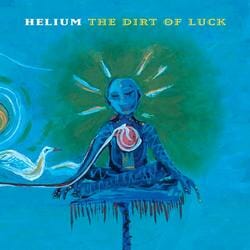 8. Helium: The Dirt of LuckI think a lot of people would consider Helium’s music ugly. I think those people would consider most of the music on this list ugly, so feel free to ignore them. But there’s something about The Dirt of Luck that seems even more raw and obtuse than many of Helium’s peers. It’s in the no wave-ish grit of Mary Timony’s guitar, the stuttered rhythm of “Trixie’s Star,” the way “Oh The Wind and Rain” contrasts its sing-song melody with a sudden five-car pileup of guitar crunch. Helium was Sonic Youth if they didn’t have Thurston Moore’s obsession with making anthems.
8. Helium: The Dirt of LuckI think a lot of people would consider Helium’s music ugly. I think those people would consider most of the music on this list ugly, so feel free to ignore them. But there’s something about The Dirt of Luck that seems even more raw and obtuse than many of Helium’s peers. It’s in the no wave-ish grit of Mary Timony’s guitar, the stuttered rhythm of “Trixie’s Star,” the way “Oh The Wind and Rain” contrasts its sing-song melody with a sudden five-car pileup of guitar crunch. Helium was Sonic Youth if they didn’t have Thurston Moore’s obsession with making anthems.
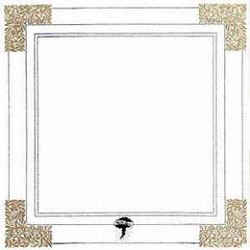 7. Smog: Wild LoveBill Callahan was still over a decade away from dropping the Smog name when Wild Love came out in ‘95, but he was already expanding his artistic parameters. Wild Love adorns Callahan’s previously lo-fi music with keyboards and strings, giving them a musical depth as rich as Callahan’s vivid lyrics. Callahan has a knack for writing songs that sound fragile despite the utmost confidence in which they were obviously written and performed, and that’s on display in songs like “Bathysphere,” “Bathroom Floor” and “Goldfish Bowl.”
7. Smog: Wild LoveBill Callahan was still over a decade away from dropping the Smog name when Wild Love came out in ‘95, but he was already expanding his artistic parameters. Wild Love adorns Callahan’s previously lo-fi music with keyboards and strings, giving them a musical depth as rich as Callahan’s vivid lyrics. Callahan has a knack for writing songs that sound fragile despite the utmost confidence in which they were obviously written and performed, and that’s on display in songs like “Bathysphere,” “Bathroom Floor” and “Goldfish Bowl.”
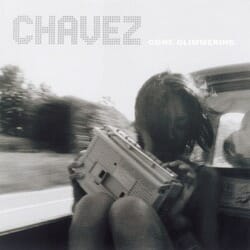 6. Chavez: Gone GlimmeringI’ve always viewed the term “math rock” as an insult. There’s nothing wrong with being smart, and Donald in Mathmagic Land taught us that all music is math, but some of the worst music ever was made by rock bands who tried to get too intellectual with their biz. Also the music described as “math rock” back then was so insular, so derivative, interested not even in “chops” (chops ain’t a sin), but in rigid patterns and formulas that squeezed all the feeling out of everything. So hey, I’m happy to say that Chavez isn’t really math rock, despite snuggling up against some of its genre conventions. Chavez songs might be tightly written and precisely played, but they can also be hilarious, exciting and passionate. Chavez expertly walks all kinds of lines here—Gone Glimmering has human emotions but isn’t emo, it’s brainy and expertly put together but isn’t quite math rock, it’s muscular and heavy but nowhere near metal or hardcore. It’s funny, but it ain’t no joke. And yep, these guys have chops, and they want you to know it.
6. Chavez: Gone GlimmeringI’ve always viewed the term “math rock” as an insult. There’s nothing wrong with being smart, and Donald in Mathmagic Land taught us that all music is math, but some of the worst music ever was made by rock bands who tried to get too intellectual with their biz. Also the music described as “math rock” back then was so insular, so derivative, interested not even in “chops” (chops ain’t a sin), but in rigid patterns and formulas that squeezed all the feeling out of everything. So hey, I’m happy to say that Chavez isn’t really math rock, despite snuggling up against some of its genre conventions. Chavez songs might be tightly written and precisely played, but they can also be hilarious, exciting and passionate. Chavez expertly walks all kinds of lines here—Gone Glimmering has human emotions but isn’t emo, it’s brainy and expertly put together but isn’t quite math rock, it’s muscular and heavy but nowhere near metal or hardcore. It’s funny, but it ain’t no joke. And yep, these guys have chops, and they want you to know it.
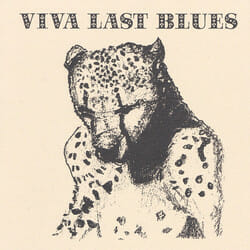 5. Palace Music: Viva Last BluesWill Oldham’s first two albums (both released under the Palace Brothers name) proved he was a talented songwriter able to revive rich folk traditions from the past without coming off as insincere or overly beholden to the past. He took another step forward on Viva Last Blues, where, with the assistance of Steve Albini and members of Sebadoh and Plush, he made a modern country rock record that avoids everything people hate about country rock. The best was yet to come for Oldham, but “New Partner” remains one of his most beautiful songs, and “Work Hard / Play Hard” is a perennial playlist favorite.
5. Palace Music: Viva Last BluesWill Oldham’s first two albums (both released under the Palace Brothers name) proved he was a talented songwriter able to revive rich folk traditions from the past without coming off as insincere or overly beholden to the past. He took another step forward on Viva Last Blues, where, with the assistance of Steve Albini and members of Sebadoh and Plush, he made a modern country rock record that avoids everything people hate about country rock. The best was yet to come for Oldham, but “New Partner” remains one of his most beautiful songs, and “Work Hard / Play Hard” is a perennial playlist favorite.
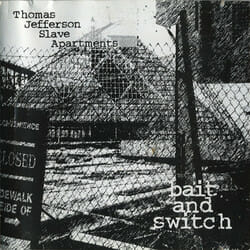 4. Thomas Jefferson Slave Apartments: Bait and SwitchRon House deserves everything Billy Joel got, minus the alcoholism. (Unless, you know, he wants that too.) The Columbus legend behind ‘80s college radio journeymen Great Plains formed Thomas Jefferson Slave Apartments right before the ‘90s started, and after a string of blistering, brilliant singles somehow wound up with a major label record deal. Some of the other records on this list were released by labels who had distribution deals with a major, but Bait and Switch is the only one on here that was actually put out by one, Rick Rubin’s American Recordings. And yet it’s the most raw lo-fi album you’ll find on this page, outside of the Yips and maybe Guided by Voices. Bait and Switch is broken, busted art rock with no patience, no budget and infinite charm, and despite being huge in certain circles it’s still probably the most underappreciated record of the ‘90s. Go listen to “Cheater’s Heaven” or “Negative Guest List,” and try to imagine how beautiful this world would be if they became the massive radio hits they should’ve been.
4. Thomas Jefferson Slave Apartments: Bait and SwitchRon House deserves everything Billy Joel got, minus the alcoholism. (Unless, you know, he wants that too.) The Columbus legend behind ‘80s college radio journeymen Great Plains formed Thomas Jefferson Slave Apartments right before the ‘90s started, and after a string of blistering, brilliant singles somehow wound up with a major label record deal. Some of the other records on this list were released by labels who had distribution deals with a major, but Bait and Switch is the only one on here that was actually put out by one, Rick Rubin’s American Recordings. And yet it’s the most raw lo-fi album you’ll find on this page, outside of the Yips and maybe Guided by Voices. Bait and Switch is broken, busted art rock with no patience, no budget and infinite charm, and despite being huge in certain circles it’s still probably the most underappreciated record of the ‘90s. Go listen to “Cheater’s Heaven” or “Negative Guest List,” and try to imagine how beautiful this world would be if they became the massive radio hits they should’ve been.
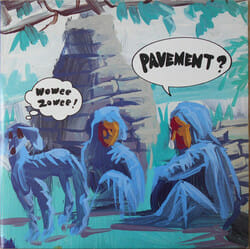 3. Pavement: Wowee ZoweePavement followed up their minor mainstream breakthough of 1994 with a long, messy, confusing album that confounded critics and alienated listeners at the time, but became embraced by its fan base as its most inspired and representative full-length. For most people I knew at the time, the process went like this: you bought the record when it came out in April and didn’t feel it at first. You kept listening to it off and on throughout that summer, alongside their earlier records and all the other amazing music that came out that year. And then, by Labor Day, or a little before, something clicked, and you’d realize the rambling, unhurried genius of the whole thing, from the graceful guitar sweep of “Pueblo,” to the fractured pop hooks of “AT&T,” to the narcotized anthem “Grounded.” Of Pavement’s five studio albums, Wowee Zowee best captures the band’s spirit, while also featuring many of their best songs and Stephen Malkmus’s best guitar work at that point.
3. Pavement: Wowee ZoweePavement followed up their minor mainstream breakthough of 1994 with a long, messy, confusing album that confounded critics and alienated listeners at the time, but became embraced by its fan base as its most inspired and representative full-length. For most people I knew at the time, the process went like this: you bought the record when it came out in April and didn’t feel it at first. You kept listening to it off and on throughout that summer, alongside their earlier records and all the other amazing music that came out that year. And then, by Labor Day, or a little before, something clicked, and you’d realize the rambling, unhurried genius of the whole thing, from the graceful guitar sweep of “Pueblo,” to the fractured pop hooks of “AT&T,” to the narcotized anthem “Grounded.” Of Pavement’s five studio albums, Wowee Zowee best captures the band’s spirit, while also featuring many of their best songs and Stephen Malkmus’s best guitar work at that point.
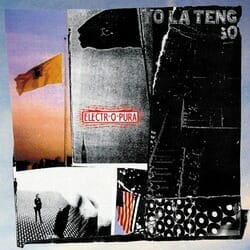 2. Yo La Tengo: Electr-O-PuraYo La Tengo really became Yo La Tengo with 1993’s Painful, a decade into their existence; that record is bookended by the lengthy drone of “Big Day Coming” and the expansive jam of “I Heard You Looking,” with healthy amounts of noise and tranquility in between. Their next album, Electr-O-Pura, built on that newfound confidence, sprawling out in all the various musical directions that define the band; at just under an hour, it was their longest album when it came out, and yet the shortest of the six albums they released between 1995 and 2009. Those 58 minutes encompass the noise-pop of “Decora,” the gorgeously yearning “Pablo and Andrea,” the soft-spoken melancholy of “The Hour Grows Late” and “Don’t Say a Word,” the legit all-time indie rock anthem “Tom Courtenay,” and another eight or nine songs where experimentation and traditionalism collide. “Blue Line Swinger,” the epic finale, remains the band’s best song. There are a couple of Yo La Tengo albums I personally prefer over this one, but its greatness and importance are undeniable.
2. Yo La Tengo: Electr-O-PuraYo La Tengo really became Yo La Tengo with 1993’s Painful, a decade into their existence; that record is bookended by the lengthy drone of “Big Day Coming” and the expansive jam of “I Heard You Looking,” with healthy amounts of noise and tranquility in between. Their next album, Electr-O-Pura, built on that newfound confidence, sprawling out in all the various musical directions that define the band; at just under an hour, it was their longest album when it came out, and yet the shortest of the six albums they released between 1995 and 2009. Those 58 minutes encompass the noise-pop of “Decora,” the gorgeously yearning “Pablo and Andrea,” the soft-spoken melancholy of “The Hour Grows Late” and “Don’t Say a Word,” the legit all-time indie rock anthem “Tom Courtenay,” and another eight or nine songs where experimentation and traditionalism collide. “Blue Line Swinger,” the epic finale, remains the band’s best song. There are a couple of Yo La Tengo albums I personally prefer over this one, but its greatness and importance are undeniable.
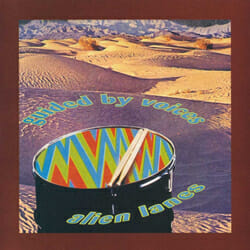 1. Guided by Voices: Alien LanesBee Thousand might get the most praise, but Alien Lanes is Guided by Voices’ best record, an overstuffed suitcase full of brilliant hooks and perfect songwriting that rushes by in a blur without feeling hurried or unfinished. Bob Pollard’s distinctive approach to songwriting—laser-focused but kaleidoscopic, straightforward but obtuse—resulted in an original album that could be a greatest hits comp, with timeless masterpieces like “Game of Pricks,” “Motor Away” and “My Valuable Hunting Knife” absolutely holding their own against the best rock ‘n’ roll music of all time. It’s not just the best indie rock album of 1995, but best record of the year, and perhaps the decade.
1. Guided by Voices: Alien LanesBee Thousand might get the most praise, but Alien Lanes is Guided by Voices’ best record, an overstuffed suitcase full of brilliant hooks and perfect songwriting that rushes by in a blur without feeling hurried or unfinished. Bob Pollard’s distinctive approach to songwriting—laser-focused but kaleidoscopic, straightforward but obtuse—resulted in an original album that could be a greatest hits comp, with timeless masterpieces like “Game of Pricks,” “Motor Away” and “My Valuable Hunting Knife” absolutely holding their own against the best rock ‘n’ roll music of all time. It’s not just the best indie rock album of 1995, but best record of the year, and perhaps the decade.
Just missed the cut: Although East River Pipe’s fantastic Poor Fricky was released by Merge in 1995, it first came out in the U.K. on Sarah Records the prior year. I’m only adding this note because I’d already had a damn paragraph written up about it and everything before finding out it was actually a ‘94 release, and I wanted to pay at least some notice to that wasted and vanished labor I performed.
Senior editor Garrett Martin writes about videogames, comedy, music, travel, theme parks, wrestling, and anything else that gets in his way. He’s on Twitter @grmartin.